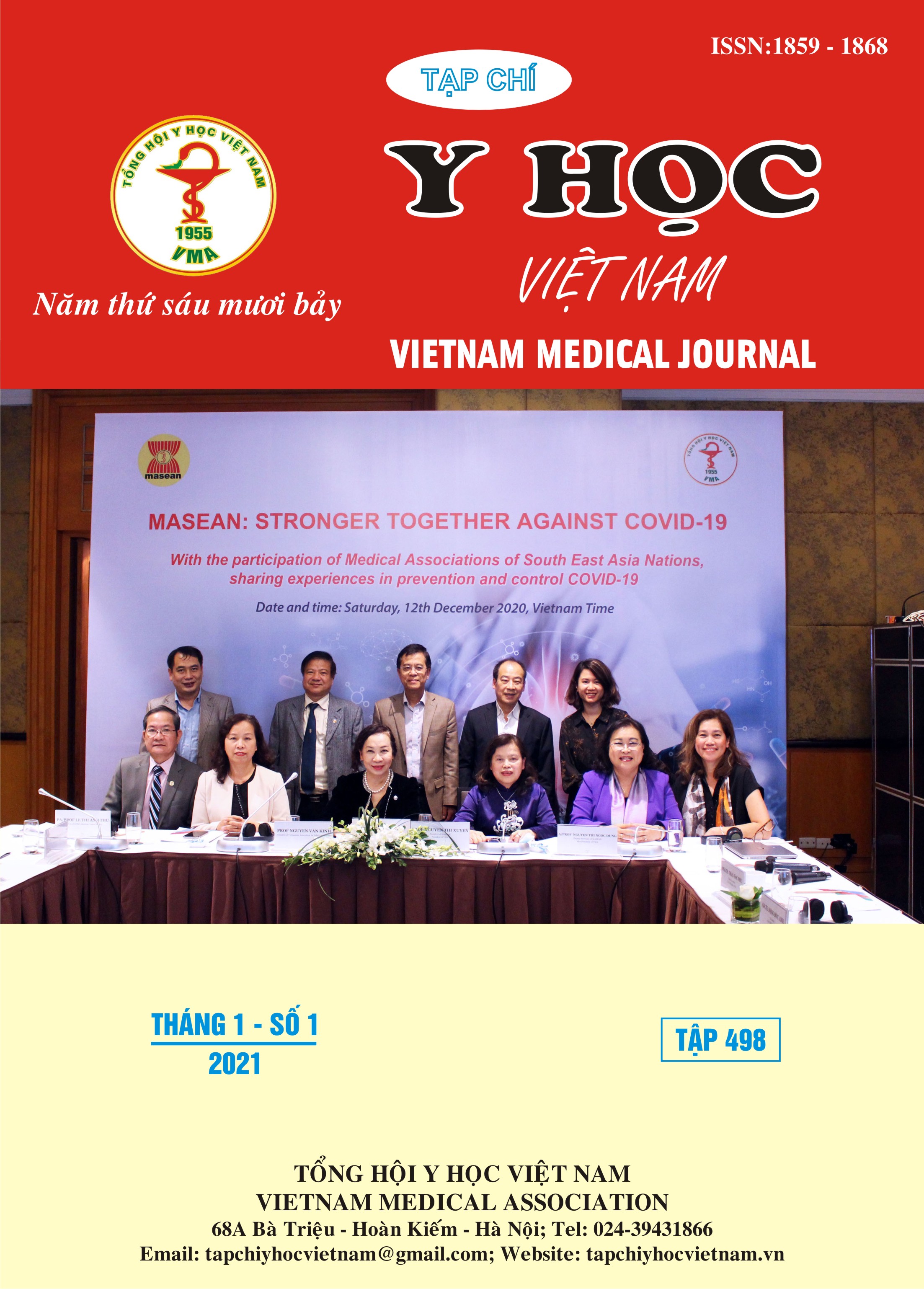THE EFFECTIVENESS OF COMBINATION OF MIRROR THERAPY IN REHABILITATION FOR MOTOR FUNCTION IN PATIENTS WITH HEMIPARESIS DUE TO STROKE IN CAO BANG HOSPITAL OF TRADITIONAL MEDICINE
Main Article Content
Abstract
Objective: To assess the effectiveness of combination of mirror therapy in rehabilitation for moto function in patients with hemiparesis due to stroke. Subjects and methods: intervention study - controlled trial with 180 patients, who were hemiparesis due to stroke, are treated in Cao Bang hospital of traditional medicine in the period from July, 3rd 2018 to July, 3rd 2020. Results and conclusions: After 3 months of program, within intervention proup, 94,44% patients had good sitting ability (the firgure before intervention is 73,33%), and 64,44% patients are able to walk by themselves (the firgure before intervention is 32,22%). The hand moto function increased in both intervention and control group; however, the result of intervention group was more effective than of control group in terms of excellent and good moto function , at 75,56% compared with 52,22%. Level of hand dexterity in paralyzed hand increased after 3 months of program, with level 4,5,6 being the most skillful level, accounting for 56.66% (before intervention 2.22%).
Article Details
Keywords
Stroke, rehabilitation, ischemic stroke, physical therapy, mirror therapy.
References
2. Nguyễn Thị Kim Liên (2011), Nghiên cứu phục hồi chức năng bàn tay trên bệnh nhân liệt nửa người do tai biến mạch máu não. Luận văn tiến sỹ Y học, Trường Đại học Y Hà Nội, tr. 90 – 95.
3. Nguyễn Thị Kim Liên, Trần Việt Hà (2015), “Hiệu quả phục hồi chức năng chi trên ở bệnh nhân liệt nửa người do nhồi máu não bằng chương trình GRASP”, tạp chí Y dược học quân sự số 1, tr 85 – 90.
4. Vũ Thị Kim Thanh (2012), "Đánh giá hiệu quả phục hồi chức năng vận động chi trên ở bệnh nhân tai biến nhồi máu vùng trên lều", Luận văn thạc sỹ y học, Đại học Y Hà Nội, tr 55.
5. Cao Thành Vân, Trình Trung Phong (2011), ‘‘Nghiên cứu đặc điểm của một số yếu tố nguy cơ thường gặp ở bệnh nhân tai biến mạch máu não tại bệnh viện Đa khoa Quảng Nam năm 2011’’, tạp chí y học Việt Nam số 23 tr 112 – 115.
6. Broeks J. G, Rumping K, et al. (2004), "The long-term outcome of arm funtion after stroke: results of a follow-up study", Disability and rehabilitation, (21), pp 357-364.
7. Harris J.E (2009), "A self - administered graded repetitive arm supplementary program improves arm funtion during inpatient stroke rehabilititation: a multi - site randomized controlled trial", Stroke, 40, pp. 2123 - 2128.
8. Whyte J (1993), “Neurologic disorders of attention and arousal: assessment and treatment”, Archives of Physical Medicine and Rehabilitation, Vol 73, 1094-1103.


